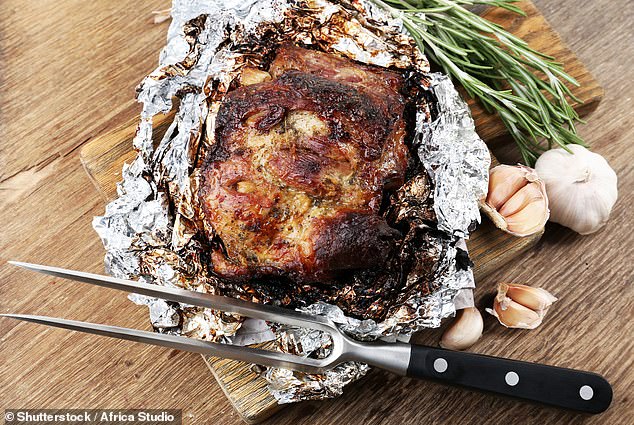
Expert Warns Against Using Aluminum Foil for Easter Leftovers: Storage Risks Explained
Easter Leftovers Alert: Why Aluminum Foil Poses a Food Poisoning Risk
Over Easter, many enjoyed roast lamb feasts, but experts warn that improper storage of leftovers—especially using aluminum foil—can breed dangerous bacteria.
The Foil Problem
Aluminum foil, while convenient, doesn’t create an airtight seal, allowing oxygen to reach food. This environment promotes bacterial growth, including pathogens like Staphylococcus (causing staph infections), Bacillus cereus (leading to vomiting/diarrhea), and even rare but deadly Clostridium botulinum (botulism) or Listeria.

Caption: Foil-wrapped leftovers may seem safe but can harbor harmful bacteria (stock image).
Acidic Foods React with Foil
Food Safety Scotland notes that acidic foods (e.g., rhubarb, citrus) can react with aluminum, causing metal leaching. While generally safe, this affects taste and is best avoided.
Safe Storage Tips
- Use Airtight Containers: Replace foil with sealed containers or bags to block oxygen.
- Refrigerate Promptly: Store leftovers within 2 hours (1 hour if above 32°C/90°F). Discard if left out longer.
- Fridge/Freezer Temps: Keep fridges ≤5°C (41°F) and freezers ≤-18°C (-0.4°F).
- Consume Quickly: Eat refrigerated leftovers within 48 hours. Freeze for longer storage.

Caption: Opt for airtight containers instead of foil to prevent bacterial growth.
Bacteria Danger Zone
Bacteria thrive between 4°C (40°F) and 60°C (140°F). The USDA stresses keeping food out of this range. Fridge placement matters too: store leftovers on upper shelves away from raw meats to avoid cross-contamination.
Key Takeaways
- Avoid foil for long-term storage.
- Monitor fridge/freezer temperatures.
- When in doubt, throw it out: Discard leftovers after 2 days or if odor/color seems off.

Caption: Store leftovers on upper fridge shelves, away from raw meats (stock image).
By following these steps, you can enjoy Easter leftovers safely—without risking foodborne illness.


